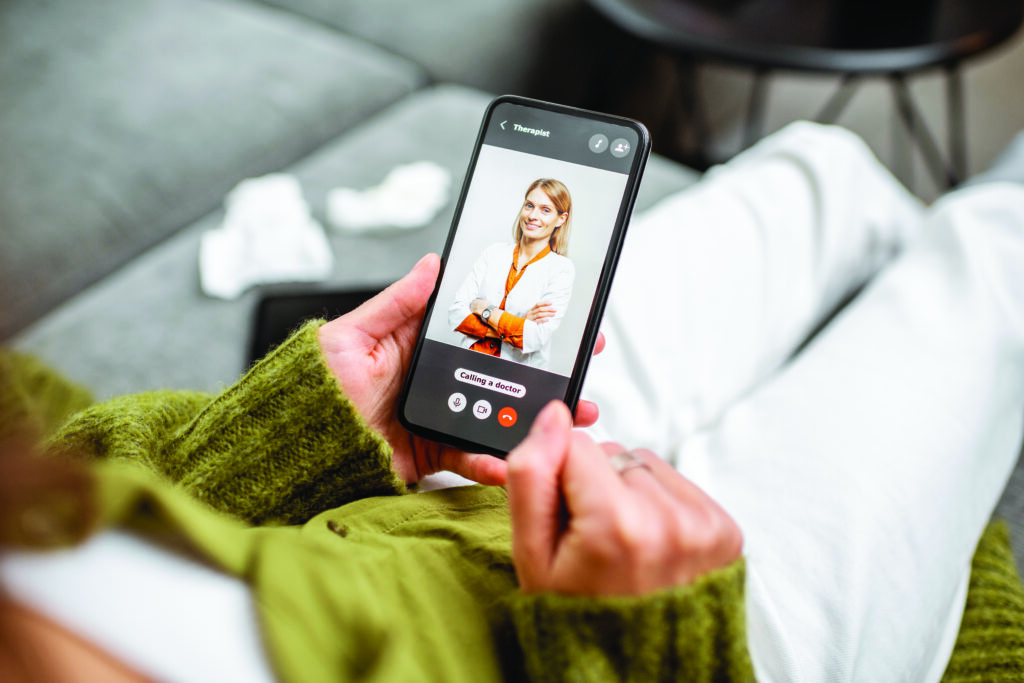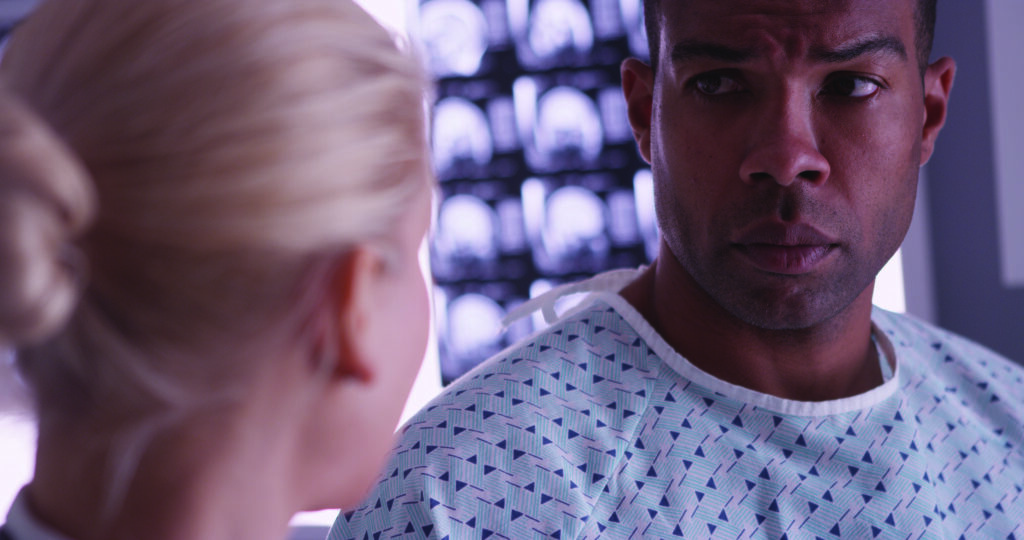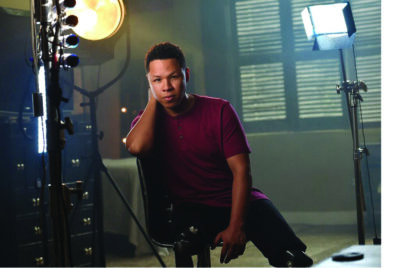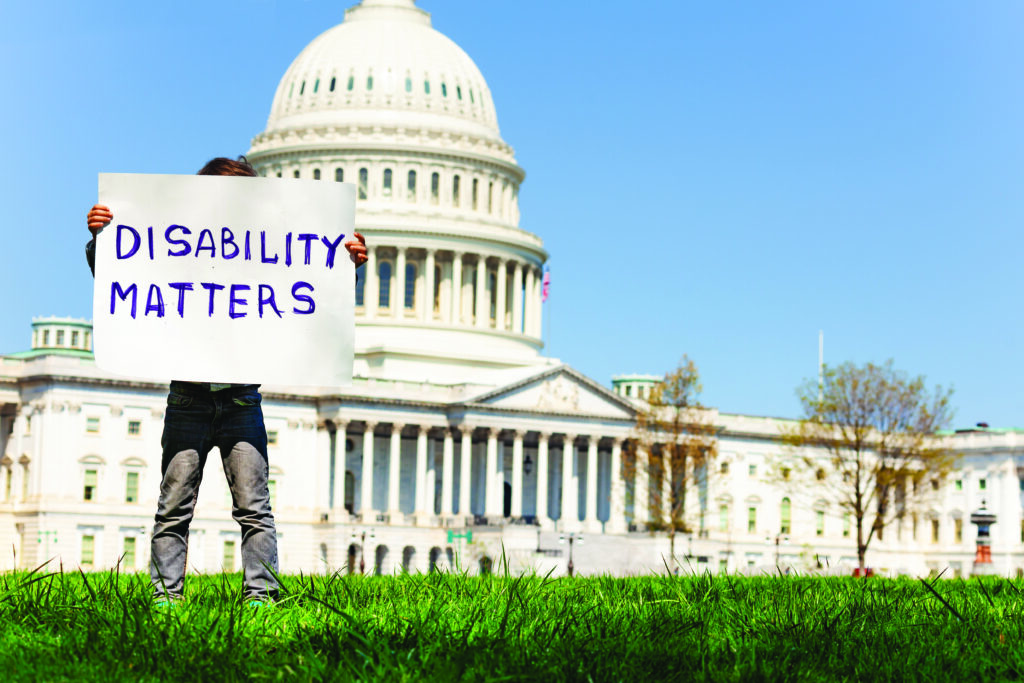While it’s risky to speculate about the future and how it might affect people’s lives, past experience and current trends can help us make educated guesses about what amputees might expect in 2021 and beyond. As longtime writers and editors of informational products for amputees, the Amplitude team pays close attention to various areas of amputee life. Based on our research and what amputees have told us, here are eight of our expectations for this year.
The Rise of Telehealth

While telehealth—which allows people to meet with healthcare professionals by phone, video chat, or online patient portals rather than in person—has been around for years, several obstacles previously prevented its widespread use.
For example, a pre-pandemic national poll by the University of Michigan (U-M) Institute for Healthcare Policy and Innovation with support from AARP and Michigan Medicine suggested that people over 50 weren’t ready to embrace telehealth appointments. Many were concerned that providers couldn’t properly do a physical exam, that the quality of care wouldn’t be as good, and that privacy was at risk.
The pandemic seems to have overridden such concerns for many people who did not want to risk—or couldn’t get—in-person appointments during the crisis. A concern that insurance wouldn’t cover telehealth was alleviated when Medicare began temporarily paying clinicians to provide telehealth services for beneficiaries during the pandemic. As a result, there was an unprecedented increase in telemedicine use—from 1.1 percent of total visits in the second quarter of 2019 to 35.3 percent in the second quarter of 2020, according to the Johns Hopkins Bloomberg School of Public Health.
The increased availability of such services is a great benefit for amputees, especially those who can’t easily get to appointments. A UT Southwestern study also reported additional benefits, including reductions in stress, missed work, hospital visits, travel time, and exposure to pathogens, in addition to improving access to care. Such benefits—along with telehealth’s potential to lower the overall costs of healthcare—ensure future efforts to overcome any obstacles to its expanded use.
More Transparency in Healthcare Prices

Patients have been shocked by surprise medical bills for years, and some steps are now being taken to inform them of the costs before they agree to treatment.
About 41 percent of insured adults nationwide were surprised by a medical bill in the past two years, and two-thirds of adults worry about their ability to afford an unexpected medical bill, according to the US Department of Health and Human Services. Moreover, according to a survey of Americans who filed for personal bankruptcy between 2012 and 2016, medical problems contributed to 66.5 percent of all bankruptcies.
To help address this problem, a 2019 presidential executive order included goals for providing healthcare cost transparency. One rule, scheduled to go into effect on January 1 this year, requires hospitals to make public their standard charges for the items and services they provide. Another proposed rule would demand similar transparency from most group health plans and issuers of health insurance coverage within both the individual and group markets.
According to CBS News in 2019, “Health and Human Services Secretary Alex Azar told reporters…the order is aimed at making sure patients can access an explanation of their benefits ahead of a medical visit—including the cost of a procedure, the insurance-company negotiated price, and what they will pay out of pocket.”
Congress is also expected to take additional action to eliminate the threat of surprise billing.
Greater Efforts to End Healthcare Disparities

Dramatically increased efforts to achieve equal rights and representation for minorities and those with low incomes will also affect healthcare.
Studies have long reported that Black cancer patients, for example, have poorer outcomes than their white counterparts. When Jessica McDermott, MD, and Sana Karam, MD, PhD, of the University of Colorado Cancer Center investigated the data, they found that the outcome disparity was caused not by biology but rather by differences in access to healthcare.
“[Black patients] were less likely to see a primary care provider in the year leading up to the diagnosis and were more likely to present in the emergency room,” says McDermott. For most cancers, where and when a patient first presents can make a large difference both in the care received and in the outcome.
Other research from the University of Pennsylvania School of Nursing showed that non-Hispanic white children are more than twice as likely as non-Hispanic Black children to use insulin pump therapy to manage their type 1 diabetes.
The researchers believe this inequity may not be simply attributable to socioeconomic status. They also believe it plays a role in the racial disparities in clinical outcomes seen in type 1 diabetes, because non-Hispanic Black children have worse glycemic control and higher rates of complications of the disease.
Limb loss is also more prevalent among people of color and people with lower incomes. According to a 2020 ProPublica report titled “The Black American Amputation Epidemic,” “Diabetics undergo 130,000 amputations each year, often in low-income and underinsured neighborhoods. Black patients lose limbs at a rate triple that of others.”
Similar inequities have been found in many other areas of healthcare, and they will be fought against this year.
Increased Work-From-Home Opportunities

In April 2020, Kate Lister, president of Global Workplace Analytics, predicted that the COVID-19 pandemic will be a tipping point for work-from-home programs. She forecasts that 25 million to 30 million US employees will regularly work from home within the next two years (up from 5 million who were currently working from home half time or more). This trend is expected to continue beyond the pandemic crisis period as companies discover that much of their work can easily be done from home and they can reduce their overhead costs.
This increase in work-from-home opportunities is beneficial for employed and unemployed amputees with mobility and transportation issues who face accessibility struggles that prevent or hinder them from working outside the home. In addition to full-time telecommuting positions, more part-time opportunities will also be available for amputees who want to augment their Social Security or retirement income.
New Portals to Participation
In the past, it was difficult or impossible for many amputees to travel to events such as amputee support group meetings, conferences, exhibits, camps, and athletic events. While support groups are usually only a relatively short distance from home, other events often required long-distance travel, which was expensive and physically and emotionally challenging. As a result, only a relatively small number of amputees could attend.
Again, the pandemic has changed that. Many organizers of support group meetings and other events have discovered that much of the information they offer can be delivered effectively online, where it can be accessed by participants at their own convenience. As a result, it is expected that many will continue to offer their online services after pandemic restrictions pass, either exclusively or as an option for those who can’t participate in person.
While there is a lost opportunity for social interaction at these events, the majority of amputees couldn’t attend them anyway. Now, those amputees can at least get some benefit from them.
Online Support Groups
AMPUTEE COALITION
VIRTUAL SUPPORT GROUP MEETINGS
Amputee support groups provide a safe and supportive environment for individuals living with limb loss or limb difference as well as their family members.
BALANCE VIRTUAL SUPPORT GROUP
Leslie Green, Hanger Clinic Community Care Coordinator and bilateral below-knee amputee, leads virtual meetings on Thursdays at 10AM CST and Tuesdays at 7PM CST.
legreen@hanger.com or 952-288-5684
ACTION AMPUTEE GROUP
Group meets twice per month at 6PM ET and provides support, guidance, and education for those living with limb loss. You do NOT need to be a patient of Action Prosthetics to join. For more information call Molly.
937-339-1123 or actionprosthetics.com
FINGER AND PARTIAL HAND AMPUTEE PEER + SUPPORT GROUP
Founded by Naked Prosthetics, this online support forum is for finger and partial hand amputees.
facebook.com/groups/fingerandpartialhandamputees
Better Roles, More Visibility in Hollywood for People With Disabilities

A 2020 study by the USC Annenberg School for Communication and Journalism found an increase in the number of leads and co-leads with disabilities in the 100 top-grossing films of 2019. Indeed, 19 films featured a lead or co-lead character with a disability, which is a significant increase from 2018 (nine films) and 2015 (ten films).
“While this increase in lead characters with disabilities should be celebrated, the overall percentage of disabled characters is dismal,” says Lauren Appelbaum, vice president of communications for RespectAbility.
As a result, RespectAbility has been active in educating the film industry about how to be more inclusive and accessible. The hope is to encourage more filmmakers and writers to include appropriate characters with disabilities in their work.
Eric Graise, a bilateral amputee and one of the busiest actors with a disability in the United States, agrees that the disabled community is not accurately represented in Hollywood.

“I personally could not name five actors with disabilities who are currently working at this moment,” he says. “People with disabilities make up 10 percent of the population, and yet less than 1 percent of working actors have a disability.”
While there’s still a long way to go to achieve equal representation and opportunities, the trend seems to be positive.
“With the market size of the extended disability community being 63 percent, opening the inclusion umbrella is not just the right thing to do,” says Appelbaum. “It also is economically smart, as the disability market is valued at more than $1 trillion, according to Nielsen.”
Enhanced Bionics

Improved technology and medical procedures that better connect the body and the brain may improve patients’ control of their prosthetic devices so that the devices can function more realistically and provide users a higher degree of feeling. They could help patients better control their prosthetic devices so that they can hold an egg without breaking it, for example.
These developments will be made possible through artificial intelligence; advanced neural networks; prosthetic sensors and electrodes that can help the user “feel”; two-way communication between the brain and the prosthesis; and the development of ever-smaller components.
In a project led by Max Ortiz Catalan, PhD, of Chalmers University of Technology, patients have used a mind-controlled prosthesis in everyday life for years. For the last few years, they have also lived with a new function—sensations of touch in the prosthetic hand. This is a new concept for these artificial limbs, which are called neuromusculoskeletal prostheses and are connected to the user’s nerves, muscles, and skeleton.
“Our study shows that a prosthetic hand attached to the bone and controlled by electrodes implanted in nerves and muscles can operate much more precisely than conventional prosthetic hands. We further improved the use of the prosthesis by integrating tactile sensory feedback that the patients use to mediate how hard to grab or squeeze an object,” says Ortiz Catalan.
Another researcher, Michigan State University’s Galit Pelled, PhD, has received a grant to analyze the impulses that drive the highly complex movements of an octupus’ eight arms.
“Each arm of an octopus contains an axial nerve that functions like a vertebrate’s spinal cord, yet with a limitless range of movement,” Pelled says. “This is why the octopus provides an unparalleled model to study central sensorimotor circuits associated with grasping behavior…. By studying the octopus, we may be able to give people back the use of their arms—to be able to pick up a cup or hold a child—which would be an amazing gift.”
Holding Political Leaders Accountable

Following the 2020 presidential election, the parties and sub-parties in the various branches of government are expected to fight hard this year for their visions. These groups’ views on the Affordable Care Act, Medicare for All, Social Security Disability Insurance, Medicaid expansion, and outrageous drug costs and surprise medical bills could have a dramatic impact on the lives of people with disabilities.
For example, new amputees have sometimes been devastated to learn that the prosthetic devices they needed weren’t adequately covered by their insurance policies. In some cases, insurance companies have argued that the devices they need are “not medically necessary” or are “experimental” and have refused to pay anything for them. In other cases, insurance companies have only agreed to pay for one prosthetic device per lifetime or have placed an unreasonably low cap on coverage for them. Such policies have forced amputees to seek a device through a charitable organization, to do without, or to pay for it with personal funds or loans, which can result in bankruptcy or long-term high debt.
As a result, even though most of the voting is over and regardless of the parties in control, people with disabilities cannot simply relax. It’s not unusual for candidates to say one thing when they’re running for office and do something quite different once they’re elected. It’s now time to scrutinize the actions, not just the words, of the nation’s political leaders and hold them to their campaign promises or push them to change their harmful ideas and policies.
While individuals may not be able to make a huge difference on their own, they can multiply their influence by uniting with larger groups such as the Amputee Coalition, AARP, and RespectAbility.
During the 2018 midterm elections, voter participation for people with disabilities rose 8.5 percentage points, according to a Rutgers University fact sheet. With razor-thin victory margins in so many 2020 races and the importance of the 2022 midterms to control the Senate and House of Representatives, this year offers a great opportunity for people with disabilities to flex their political muscle.
TOP IMAGE: auspicious/stock.adobe.com



